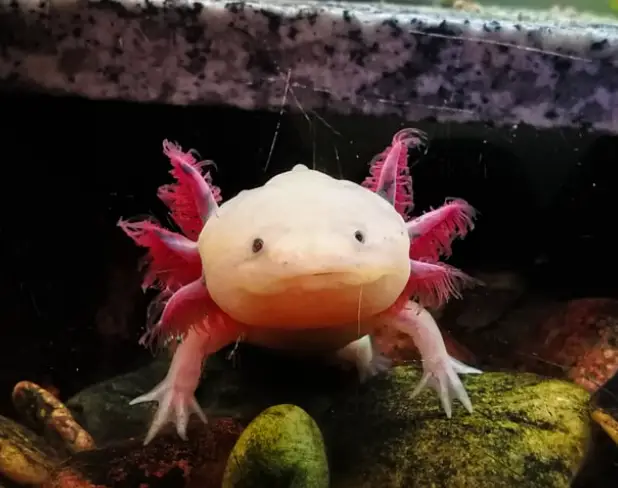Axolotls are unique amphibians that require a specialized habitat in order to thrive. They are native to the freshwater lakes and canals of Mexico, and are known for their ability to regenerate limbs and other body parts. Axolotls are becoming increasingly popular as pets due to their unique characteristics and ease of care. Ensuring that your axolotl’s environment is suitable for their needs is crucial to their health and longevity. One key factor to consider is the salinity of their water.
What is water salinity?
Water salinity is a measure of the amount of salt present in the water. Salinity can be measured in parts per thousand (ppt) or in percentage (%). Saltwater has a higher salinity than freshwater, with typical salinity levels ranging from 35 ppt to 50 ppt. Freshwater, on the other hand, usually has a salinity level of less than 1 ppt.
Why is water salinity important for axolotls?
Axolotls are aquatic amphibians that require a specific range of water conditions to survive and thrive, including water salinity. The salinity of the water can have a significant impact on the physiology and behavior of axolotls.
Axolotls are adapted to freshwater environments and are not well-suited for living in saltwater. Exposure to saltwater can cause osmotic stress, which can lead to dehydration and other health issues. Axolotls are also sensitive to changes in water salinity and can become stressed if the salinity levels are outside their preferred range.
In addition, water salinity can affect the growth and development of axolotls. High salinity levels can impair their ability to absorb oxygen and nutrients, which can lead to stunted growth and other developmental problems. Therefore, it’s important to maintain the proper salinity levels in the water when keeping axolotls as pets or in laboratory settings.
Overall, water salinity is an important factor to consider when caring for axolotls, and it’s crucial to maintain the proper salinity levels to ensure their health and well-being.
What is the ideal water salinity for axolotls?
Axolotls are a type of aquatic salamander that are typically kept as pets. The ideal water salinity for axolotls is freshwater with a salinity of 0 parts per thousand (ppt). They are adapted to living in fresh water and can be sensitive to changes in water chemistry, so it is important to maintain a consistent and appropriate salinity level in their aquarium.
It is also important to note that axolotls are cold water animals and prefer water temperatures between 60-68°F (16-20°C). Additionally, they require good water quality, a balanced diet, and appropriate tank size and habitat to thrive in captivity.
How do you measure water salinity?
Water salinity is typically measured in terms of the concentration of dissolved salts in the water. One common way to measure water salinity is by using an electrical conductivity meter or a salinometer.
Electrical conductivity meters measure the electrical conductivity of the water, which is directly related to the concentration of dissolved salts in the water. Salinometers, on the other hand, use a different method to measure the salinity of water. They measure the refractive index of the water, which is also related to the concentration of dissolved salts in the water.
Another common method for measuring water salinity is by using a titration method. This method involves adding a solution of known concentration to the water and measuring the amount of solution required to neutralize the water. The amount of solution required to neutralize the water can be used to calculate the salinity of the water.
There are also other methods for measuring water salinity, such as using a hydrometer, which measures the density of the water, or using a colorimetric method, which involves adding a reagent to the water that changes color in the presence of dissolved salts.
How do you adjust water salinity for axolotls?
Axolotls are aquatic salamanders that are native to freshwater systems in Mexico. They are adapted to living in freshwater and require specific water conditions in order to thrive in captivity. One of the most important factors to consider when caring for axolotls is water salinity, which refers to the amount of dissolved salts in the water.
Axolotls are adapted to living in freshwater with low salinity, typically with a salinity level of 0 to 0.5 parts per thousand (ppt). Therefore, if you are keeping axolotls in captivity, it is important to adjust the water salinity accordingly. Here are some steps to follow:
- Test the salinity of the water: Before making any adjustments to the salinity of the water, you need to know what the current salinity level is. You can do this by using a salinity meter or a hydrometer. These tools can measure the concentration of dissolved salts in the water and give you a reading in ppt.
- Adjust the salinity: If the salinity level is too high for axolotls, you will need to adjust it. The easiest way to do this is by diluting the water with freshwater. For example, if the salinity level is 1 ppt, you can add an equal amount of freshwater to bring the salinity level down to 0.5 ppt. Be sure to mix the water thoroughly to ensure that the salinity is evenly distributed throughout the tank.
- Monitor the salinity: After adjusting the salinity, it is important to monitor it regularly to ensure that it remains within the optimal range for axolotls. You can do this by testing the water regularly with a salinity meter or hydrometer. If the salinity level starts to drift out of the optimal range, you may need to make further adjustments.
In general, it is best to maintain a consistent salinity level in the axolotl’s environment. Sudden changes in salinity can be stressful for axolotls and can lead to health problems. By monitoring the salinity level and making adjustments as needed, you can help ensure that your axolotls stay healthy and happy in their aquatic home.
Conclusion
In conclusion, maintaining an appropriate salinity level is crucial to the health and well-being of your axolotl. The ideal salinity level for axolotls is 0 ppt to 0.5 ppt, which is equivalent to a freshwater environment. Monitoring and adjusting salinity levels as needed is an important part of caring for your axolotl. By providing your axolotl with a healthy environment, you can ensure that they live a long and happy life.







